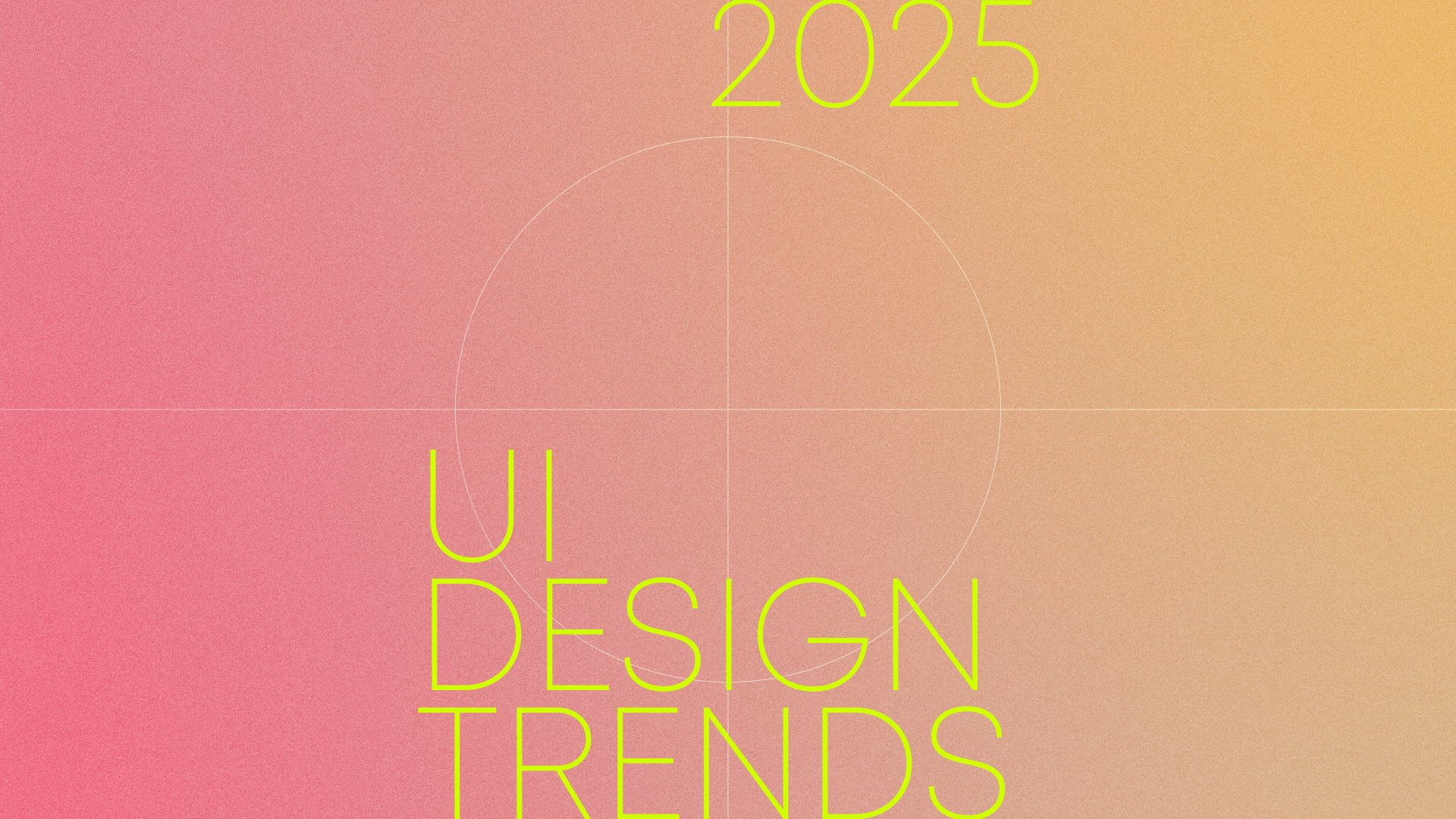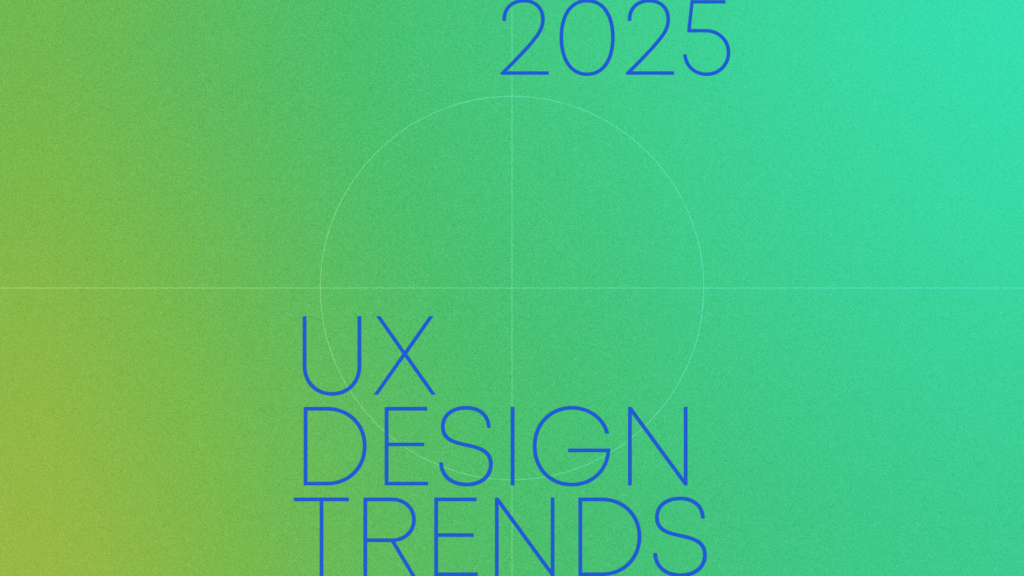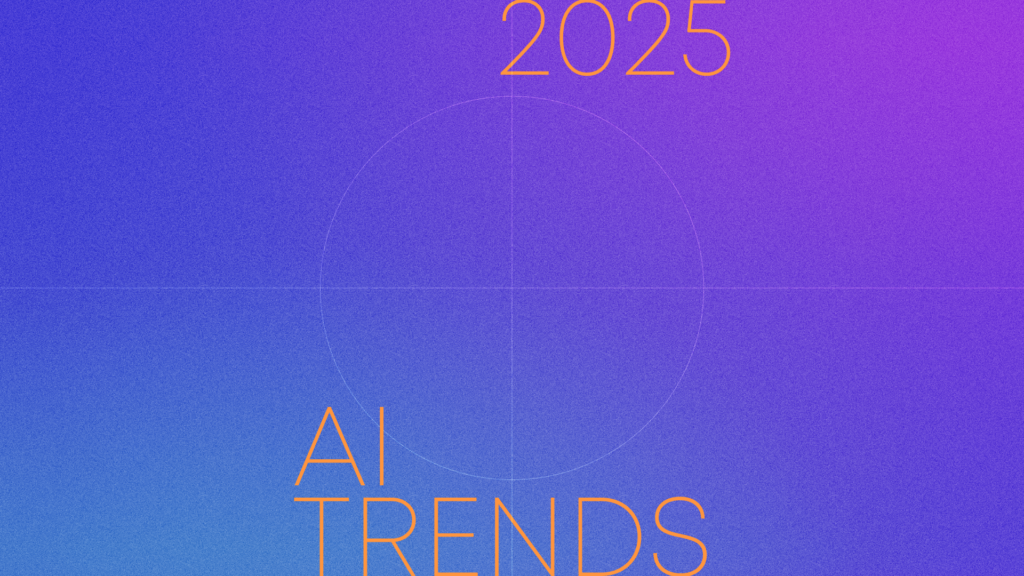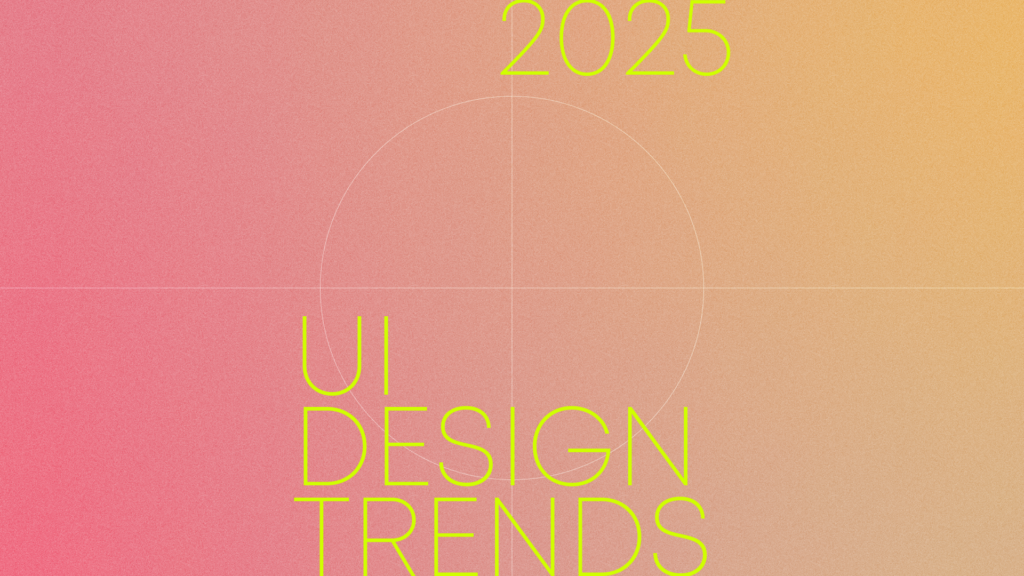UI design in 2025 is evolving rapidly, driven by technological innovation, changing user expectations, and a focus on inclusivity and sustainability. Technologies like AI, AR, and voice interfaces are enabling more immersive and adaptive interfaces, pushing boundaries beyond traditional designs.
Users now expect faster, smarter, and more intuitive experiences, demanding seamless interactions and visually compelling layouts. Accessibility has become a non-negotiable priority, with inclusive features like adjustable text sizes, high-contrast modes, and voice navigation becoming standard.
Sustainability and ethical practices are also reshaping UI. Designers are prioritizing energy-efficient solutions like dark mode and lightweight frameworks while ensuring transparency and data protection to build user trust.
2025 marks a pivotal moment where UI design isn’t just about functionality—it’s about creating meaningful, inclusive, and sustainable digital experiences.
1. AI-Powered Personalization
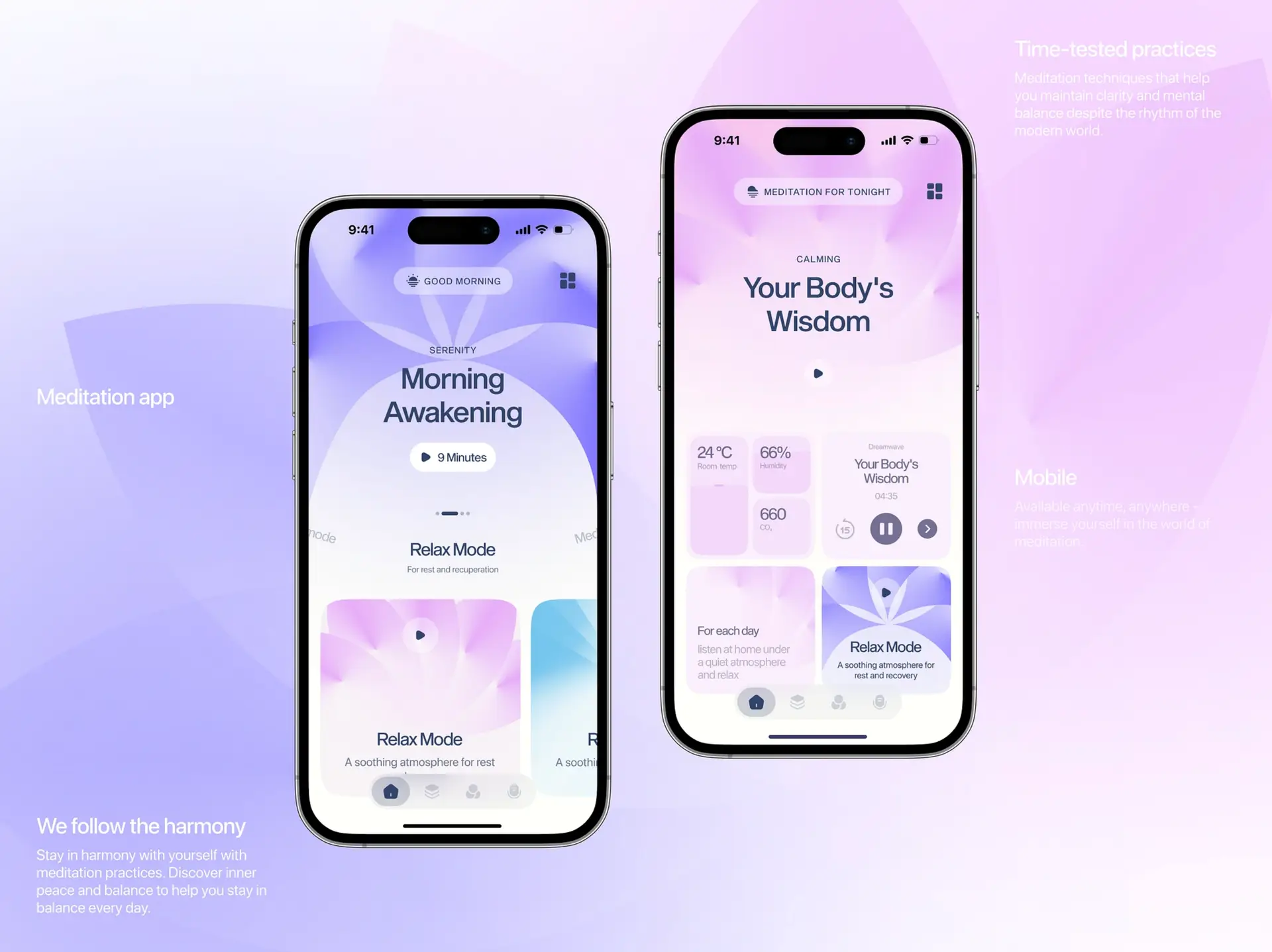
Source: Awsmd on Dribbble
Artificial intelligence is reshaping how users interact with digital platforms by enabling dynamic, real-time customization. Interfaces powered by AI can analyze user behavior, preferences, and patterns to adapt layouts, content, and functionalities. For example, streaming services can curate personalized libraries and adjust recommendations based on viewing habits. Similarly, fitness apps can modify dashboards to emphasize features most relevant to users’ progress. This trend ensures that every user experience feels tailored and unique, driving engagement and loyalty.
2. Minimalism and Buttonless Design
Minimalism remains a key design philosophy, but in 2025, it is taking a bold step forward with buttonless interfaces. Gesture-based navigation replaces traditional buttons, allowing for a cleaner and more immersive experience. For instance, swiping motions are used to delete or save items, while touch zones trigger context-sensitive menus only when needed. This approach reduces visual clutter and streamlines the user journey, making interactions feel intuitive and seamless.
3. Immersive Scrolling Experiences
Scrolling has become an interactive storytelling tool in modern design. Websites and apps now use scrolling to unveil content dynamically, often with parallax effects, animations, and layered visuals. These immersive experiences guide users through narratives, making browsing engaging and memorable. For example, brand storytelling pages might reveal new chapters of a company’s journey as users scroll, while e-commerce sites might showcase products with animated transitions that highlight key features.
4. Morphism: Glassmorphism, Neumorphism, and Skeuomorphism
Morphism styles are redefining the aesthetics of digital interfaces.
- Glassmorphism uses frosted-glass effects and layered translucency to create elegant designs, often seen in dashboards and overlays.
- Neumorphism adds depth with soft shadows and gradients, mimicking physical buttons and controls for a tactile feel.
- Skeuomorphism, though once considered outdated, is making a subtle comeback by blending realistic textures and materials into modern layouts.
These styles enhance usability by combining visual appeal with functional familiarity.
5. Big Typography
Typography takes center stage in 2025, with bold, oversized text becoming a focal point in design. This trend moves beyond simply making text large; it’s about using typography as a storytelling element. Minimalist layouts often feature striking headlines that draw attention without relying on heavy visuals. Big typography is particularly popular in branding-heavy industries such as fashion, editorial design, and creative portfolios, where words themselves make a statement.
6. Biometric Authentication
As security becomes increasingly important, biometric authentication is replacing traditional passwords. Methods such as fingerprint scans, facial recognition, and voice authentication provide both security and ease of use. For example, banking apps now allow users to log in with facial recognition, while e-commerce platforms enable fingerprint payment authorization. This technology simplifies access while strengthening security, creating a frictionless and trustworthy user experience.
7. Dark Mode Evolution
Dark mode has evolved into a design necessity rather than an optional feature. In 2025, dark mode designs are enhanced with vibrant accent colors and improved readability. Adaptive themes that adjust to ambient lighting conditions further elevate usability. Dark mode is particularly effective for apps used in low-light environments, such as reading platforms, where it reduces eye strain while maintaining a modern aesthetic.
8. Augmented Reality (AR) and Mixed Reality (MR)
AR and MR are bridging the gap between the digital and physical worlds, offering immersive and interactive experiences. Retail apps let users visualize furniture in their spaces, while educational tools use AR to explore complex 3D models. These technologies are also making strides in healthcare and real estate, where they provide lifelike simulations. AR and MR enhance user interaction by making digital experiences feel tangible and engaging.
9. Advanced Micro-Interactions
Micro-interactions are the subtle, often overlooked animations and responses that enhance user experiences. Examples include buttons that morph when clicked, progress bars that animate dynamically, or icons that respond to hover effects. In 2025, these interactions are more sophisticated, creating seamless, delightful feedback loops that make users feel connected to the platform.
10. Sustainability in Design
With a growing focus on environmental consciousness, sustainability is now influencing UI design. Energy-efficient practices, such as dark mode and minimalist layouts, reduce resource consumption. Additionally, optimized code and lightweight frameworks help improve performance. This trend aligns with users’ values while demonstrating brands’ commitments to environmental stewardship.
11. 3D and Dynamic Visuals
3D design is moving beyond gaming and into everyday applications. Dynamic visuals and interactive 3D elements are becoming common in e-commerce, where users can rotate and examine products, and in education, where 3D models help illustrate complex ideas. These elements add depth and interactivity to interfaces, creating engaging and memorable experiences.
12. Accessible and Inclusive Design
Inclusivity is no longer optional in UI design—it’s a fundamental requirement. Features like adjustable text sizes, voice navigation, and high-contrast color schemes ensure that interfaces are accessible to users with disabilities. Complying with accessibility standards not only broadens the user base but also improves the overall quality of the user experience for everyone.
13. Dynamic Typography
Typography is becoming a dynamic design element, moving beyond static text. Animated headlines, responsive text sizes, and scroll-triggered effects are being used to create interactive experiences. For example, a headline might animate into view as users scroll or change size based on screen orientation. Dynamic typography adds personality to interfaces, making them feel more alive and engaging.
14. Content-Focused Design
In 2025, content takes the spotlight, with designs emphasizing clear visual hierarchies and organized layouts. Strategic use of whitespace ensures that important elements stand out, guiding users through pages effortlessly. This trend is particularly relevant for blogs, news sites, and educational platforms, where the presentation of text, images, and videos needs to be both attractive and functional.
15. Voice User Interfaces (VUIs)
Voice User Interfaces (VUIs) are transforming how users interact with technology. By enabling hands-free, conversational interactions, VUIs offer a more intuitive alternative to traditional input methods. Smart assistants like Alexa and Google Assistant have normalized voice-based interactions, and by 2025, designing for voice is essential. VUIs enhance accessibility and convenience, particularly for users with disabilities or those multitasking. From voice-activated searches to conversational chatbots, VUIs are redefining the boundaries of UI design.
Let's Collaborate
Ready to dive into the Rabbit Hole? Let's create something extraordinary together.
Conclusion
The UI trends of 2025 reflect a shift towards bold aesthetics, personalized experiences, and inclusive design practices. From immersive scrolling to biometric authentication, these innovations are shaping the way users interact with digital platforms. By embracing these trends, designers can create interfaces that are not only visually stunning but also functional, accessible, and future-ready. These designs are setting new standards for what users expect from digital experiences, ensuring that technology continues to meet the evolving needs of a global audience.
